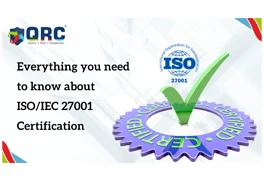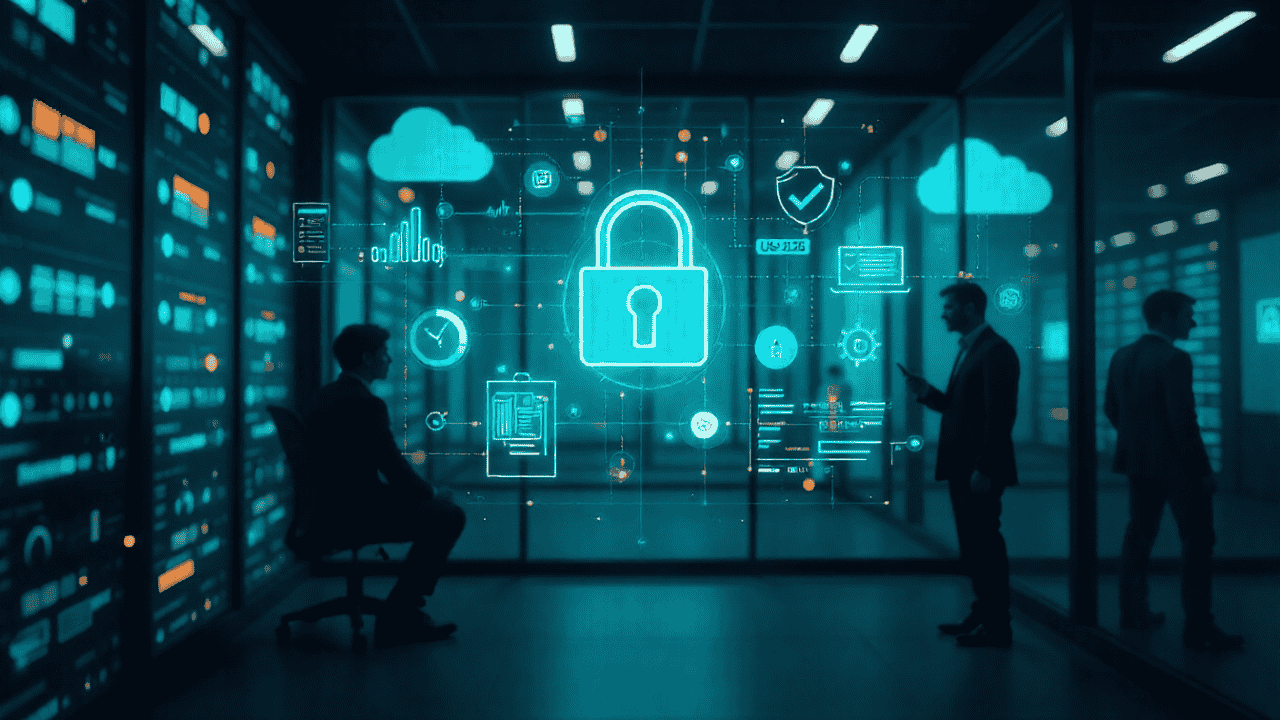
Everything you need to know about ISO/IEC 27001 Certification
ISO/IEC 27001 is an international standard for the management of information security, where ISO stands for International Organization for Standardization. ISO/IEC 27001 is the go-to rule book if you are looking to set up a strong Information Security management system for your organization.
It provides a systemized set of policies and process flows to be used by organizations. The ISMS prescribed by ISO/IEC 27001 helps organizations to protect their information system, irrespective of how big they are and which industry they belong to.
ISO/IEC 27001 Certification : Planning, Process, and Main sections
To be eligible for an ISO/IEC 27001 certificate, a company must succeed in the audit conducted by an accredited certification body. Once this certificate is obtained, it implies that the organization has satisfied all the requirements as per the ISO/IEC 27001:2013 standard.
The pre-requisite to succeeding in the external audit is to optimize or revamp the existing Information Security Management System. The standard lists six steps to create and self-evaluate:
1. Understanding the security controls required for the specific industry or organization and developing a security policy.
2. To get the developed security policy up and going by manifesting clearly defined scope across the various teams, the tasks carried out by these teams, and the technology used to complete the tasks.
3. Organizing a risk assessment.
4. Evaluating the outcome of the risk assessment and identifying the threats.
5. Selecting appropriate controls to mitigate the threats identified and implementing it with proper steps.
6. Modifying the security policy according to selected and implemented controls.
The 3 principles of Information Security Management System: -
The standard lays out 14 controls to achieve the three aspects, which it states as the basic principles to achieve for information security.
• Confidentiality: Confidentiality is to maintain the organization’s information in private. This aspect ensures providing access to crucial information only to authorized persons.
• Integrity: Integrity refers to giving rights to edit crucial information only to specified persons.
• Availability: Authorized persons must have timely access to the crucial information.
ISO/IEC 27001 aims at ensuring the confidentiality, integrity, and availability of information in the organization. Risk assessment of the information, clear definition of needs of the organization, and risk mitigation are carried out step-by-step to achieve this.
The Plan-Do-Check-Act Methodology: -
The standard lays out 14 controls, which can be implemented through a 4-step methodology: Plan, Do, Check, Act. The 14 controls involve guidelines to prepare a information security plan, taking timely actions and doing to prevent data threat and checking the critical aspects at various levels.
Plan: It provides guidelines on how to plan the information security policies, plan for implementation of well-designed ISMS, and plan of risk management within the human resource team.
Do: It emphasizes data security within the organization.
Check: It instructs to check the crucial aspects within the organization.
Act: This explains the actions to be taken within the organization to prevent data incidents and threats.
14 Key Requirementsof Information Security Management System: -
Let us take a look at them.
A.5: Information security policies (2 controls): This control is all about Information security policies. From defining the framework to create an ISMS to documentation of policies and also the method to review it.
A.6: Organization of information security (7 controls): This control is about implementing the well-designed ISMS. It comprises clear assignment of duties designation-wise for smooth operation of the ISMS.
A.7: Human resource security - 6 controls: This control defines the steps to be taken for information security during the on-boarding and off-boarding of employees in the organisation. It also involves the aspects of conducting training for awareness on information security, the nature of decisions or actions taken by the management on non-adherence and agreements regarding termination of employees.
A.8: Asset management (10 controls): This control consists of protection of data assets. The framework to be followed for maintenance of hardware, software and databases. The extent of data integrity and safe handling of data assets are checked by auditors.
A.9: Access control (14 controls): This control ensures the aspect of confidentiality. It is about limitation of access to specified persons and how the access privileges are managed.
A.10: Cryptography (2 controls): This control checks the various types of encryptions used (like DES, RSA, or AES) for protection of sensitive information.
A.11: Physical and environmental security (15 controls): This control checks the measures taken for protection of information from physical factors. All physical aspects such as security systems in the buildings, access to internal equipment, vulnerabilities involving human and natural factors are checked.
A.12: Operations security (14 controls): This control consists of securing the data with backup and preventing the organization from data loss. It provides guidelines on how to save and store data involving data flows.
A.13: Communications security (7 controls): This control defines the standard of network and communication services used for ensuring a good standard in data infrastructure.
A.14: System acquisition, development, and maintenance (13 controls): This control defines the standards of security to be met while the organization acquires new information systems.
A.15: Supplier relationships (5 controls): This control checks the aspects of the organization’s communication and interaction with any third-party. All the interactions, communication, and extent of access present with any third-party service providers, outsourced personnel and vendors are checked.
A.16: Information security incident management (7 controls): This control lays out the best practices to be followed to prevent security incidents, handling of a threat and preventing recurrence of such situations.
A.17: Information security aspects of business continuity management (4 controls): This control is about the aspects of how the organization should handle disruptions, steps for smooth operation of ISMS during a time of crisis.
A.18: Compliance with internal requirements, such as policies, and with external requirements, such as laws (8 controls): This control provides a check for statutory compliance to the laws laid for the industry in which the organization is operating. It audits and reviews the effectiveness of requirements of the ISO/IEC 27001 standard.
Validity of ISO/IEC 27001:
The validity for the ISO/IEC 27001 certification is 3 years. Regular reviews and evaluation of the ISMS by the senior management of the organization must be conducted internally during this period.
Benefits of being ISO/IEC 27001 certified. Why should you choose this?
The 14 Key Requirements of the ISO/IEC 27001 provides a system of risk mitigation that is rigorous and strong. The follow-up audits, final and most crucial of the three aspects, ensures that your ISMS is constantly evolving along with the threats and the world of digital crime. Having a robust risk mitigation system like the ISO/IEC 27001 means that your organization follows all the best practices and gives an edge over every other organization.
Being ISO/IEC 27001 certified is a sign of reliability, it means you can be trusted with data security. This would be a major reason behind your customers opting you over your competitors as the world today is constantly seeking an assurance for protection of data. It will reduce the cost of sales and boost your sales. Strong risk management increases the maturity of the management as it gives a clear perception of the strengths and weaknesses of the organization. ISO/IEC 27001 suits all organizations, irrespective of the size, industry, and geographical location. Cyber security is one of the biggest challenges faced by business organizations globally.
QRC as a Certification Body for ISO/IEC 27001:
QRC provides a hassle-free solution to getting your organization ISO/IEC 27001 certified by walking you through the comprehensive process. Right from enquiry submission, effort estimation, forming a contract, various stages of audits and assessments leading to the certification and annual reviews following it. As an ISO/IEC 27001 independent certification body, QRC provides these services to give organizations across the globe an edge of being a completely security compliant business organization with streamlined information security management process.

 +91 9594449393
+91 9594449393 +1 4847906355
+1 4847906355 +63 9208320598
+63 9208320598 +44 1519470017
+44 1519470017 +84 908370948
+84 908370948 +7 9639173485
+7 9639173485 +62 81808037776
+62 81808037776 +90 5441016383
+90 5441016383 +66 993367171
+66 993367171 +254 725235855
+254 725235855 +256 707194495
+256 707194495 +46 700548490
+46 700548490


